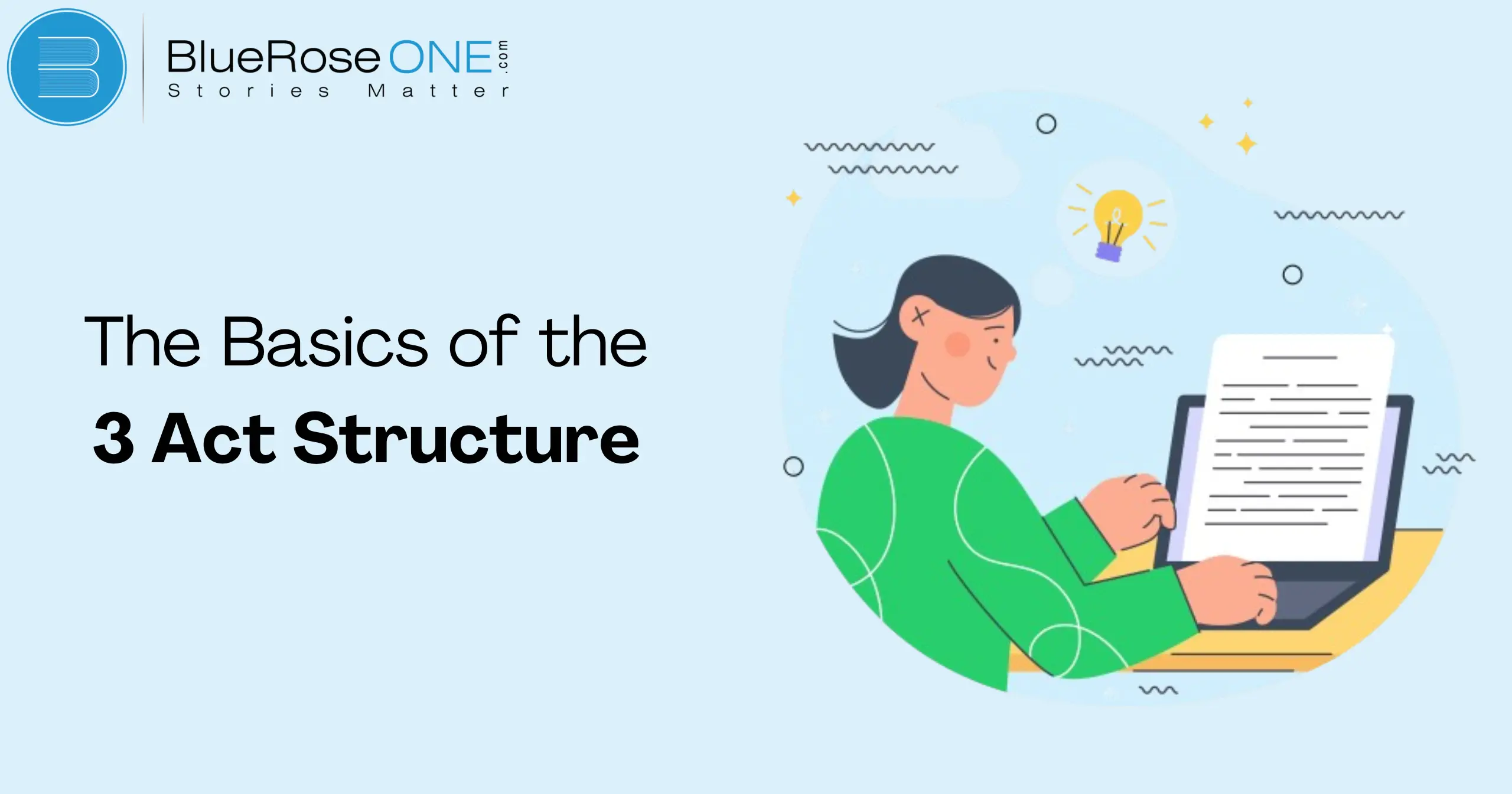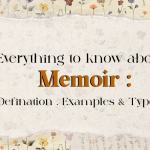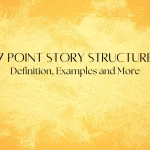The age-old skill of storytelling enthralls, instructs, and amuses. It’s essential to comprehend the mechanics of storytelling, regardless of writing expertise. The 3 Act Structure is one of the oldest and most reliable frameworks. However, what is it and why does it work so well? Now let’s get started.
Act 1: The Setup
Setting the scene is the main focus of the first act. Picture yourself in a theater, where the curtains open to reveal the scenery and introduce you to the characters. The plot of the entire novel is based on one particular deed.
Introducing the Characters
Act 1 of the three-act structure introduces us to the major characters. This is important since it clarifies for the audience what their goals and identities are. The story opens with you getting to know the protagonist and their world.
Early character introduction helps you establish a rapport with the viewer. They get interested in what occurs next. This preparation is crucial to the three-act structure because it establishes the groundwork for the disputes and difficulties that will surface in Act 2.
Establishing the Setting
One of the most important functions of Act 1 in the 3 Act Structure is setting the scene. This is the section where you present the setting, which includes the characters’ homes, times, and places.
Readers can better visualize the scenario and comprehend the motivations and actions of the characters when descriptions are clear and vivid.
Establishing the scene and capturing the interest of your audience are both dependent on this foundation. The 3 act structure’s well-established setting guarantees that your readers will be engrossed in the narrative from the first.
Presenting the Problem or Goal
Act 1 of the three-act structure is devoted to outlining the issue or objective. Here’s where you present the universe of your main characters. It’s important to determine the characters’ goals and challenges.
You can pique the interest of your audience by outlining the problem or objective in detail. Setting the stage for the entire story and ensuring that everyone is aware of the stakes makes this setup extremely important. This act sets the stage for the audience’s journey through the 3 acts.
You may also like: The 15 Best Online Book Clubs to Join in 2024
Act 2: The Confrontation
Rising Action
Act 2 of the 3 Act Structure is referred to as the “Rising Action” phase. Here, the main character encounters progressively more difficulties and roadblocks. The protagonist has both victories and disappointments while working towards their goal, which heightens the suspense in the narrative.
The plot advances and the characters are further developed as a result of these events. A sense of anticipation for the climax is created by the action’s increasing intensity. As it prepares the audience for the big clash in Act 3, this segment of the three-act structure is essential to the overall engaging and dynamic plot.
Character Development
Act 2 of the three-act structure is when character development really takes off. Here, in the middle, sometimes referred to as “The Confrontation,” the protagonist encounters a number of challenges.
These difficulties compel them to develop and alter. The character’s skills and shortcomings are put to the test as the stakes mount. The spectator learns more about the motivations and characteristics of the protagonist through these experiences.
As the audience watches the character develop and gets ready for the final act, this act is essential for fostering empathy and maintaining viewer interest. Act 2’s strong character development adds to the story’s realism and appeal.
The Midpoint
“The Midpoint” is a pivotal point in Act 2 of the three-act structure. It’s frequently the pivotal moment when the plot drastically changes. The pilot’s path is altered and the stakes are raised by this incident. The protagonist encounters a major obstacle or has to make a crucial choice that heightens the conflict.
This change keeps the viewer interested and moves the narrative closer to its conclusion. The midway is a crucial component of the three-act structure because it helps authors keep their stories moving forward and create tension.
You may also like: Why the Synecdoche Poetic Device Matters in Literature
Act 3: The Resolution
Your story’s peak and resolution occur in the third act. This is the point at which every storyline connects and the narrative reaches its zenith.
Climax
Act 3, or the resolve, is where the story achieves its climax in the three-act structure. The story’s most dramatic and thrilling section is the climax, when the primary conflict is resolved head-on. This is the pivotal moment when the protagonist succeeds in overcoming challenges and realising their objective.
The story comes to a close after the climax with all the loose ends being tied off. The story comes to a satisfying conclusion with the ending giving both the audience and the characters closure.
Comprehending the climax is essential to learning the 3 Act Structure and crafting an engaging narrative.
Falling Action
The falling action, often known as the resolve, is an essential component of Act 3 in the three-act structure. After the climax, this is where the story begins to wind down. The characters resolve unresolved issues and deal with the consequences of their deeds.
The story’s resolution flows more naturally from the climax’s intense suspense thanks to the decreasing action. It ensures that the audience is happy by offering clarification and addressing any unanswered questions. Comprehending the falling action is essential to being proficient in the 3 Act Structure and writing gripping stories.
Denouement
The last section of the three-act structure is called the denouement, or resolve. It closes out the narrative by settling any unresolved issues and tying up loose ends after the climax. At this point, the adventure of the main character comes to an end, and the results of their choices are made clear.
The audience is given a satisfactory conclusion by the resolution, which demonstrates how the characters have grown or evolved. A well-written three-act structure guarantees that the denouement makes the story feel finished and leaves the viewer with strong feelings.
You may also like: How to Write a Poem | Get Essential Tips
Why the 3 Act Structure Works
Audiences respond well to the 3 act structure because it is an organic approach to storytelling. It reflects the three stages of life that we all go through. since of this framework, stories become memorable and rewarding since it also appeals to our psychological desire for closure and resolution.
Examples of the 3 Act Structure in Popular Media
There are 3 acts in every movie, including beloved novels, contemporary blockbusters, and classic movies. Consider films such as “Star Wars,” “The Godfather,” or even “The Hunger Games.” Every one of these tales adheres to the three-act structure, bringing the audience along for a smooth and captivating story.
Common Pitfalls to Avoid
Overcomplicating the Plot
Overcomplicating the plot is a common mistake made while using the 3 act structure. Excessive twists, subplots, or characters are frequently attempted by beginners, which can confuse readers and detract from the plot. Simplicity and clarity are key components of the three-act structure.
The primary conflict should be established in Act 1, developed in Act 2, and resolved in Act 3. By following this simple structure, you can make sure that your story stays interesting and simple to read.
Maintain a tight narrative and spare each segment of the 3 act structure from needless intricacy.
Weak Midpoints
Having weak midpoints in a three-act structure is a common mistake. The midway, which typically occurs in the midst of the plot, is an important turning point. A bad middle section can make the narrative seem slow and cause the audience to become disinterested.
It ought to be a pivotal point in the story that raises the stakes for the characters and brings about a major shift or revelation. The 3 Act Structure may collapse in the absence of a compelling middle act, which would make the narrative less interesting and more difficult for viewers to follow.
Unsatisfying
Crafting an unsatisfying plot is a common mistake made while using the 3 act structure. This frequently occurs when the resolution or climax falls short of what was anticipated in the preceding acts.
Make sure the conflict is introduced clearly in Act 1, that it develops with growing action in Act 2, and that it is compellingly resolved in Act 3 to avoid this. Steer clear of giving characters unrealistic endings or leaving important story details unsolved.
A strong three-act structure holds the audience’s interest and provides a satisfying resolution that successfully wraps up the narrative.
Yoy may also read: How to Write a Foreword for Your Book (in 4 Easy Steps)
Tips for Writing a Strong 3 Act Structure
Focus on Character Arcs
Emphasis on Character Arcs: Character arcs are essential to a compelling three-act structure. This implies that your major characters should develop or evolve as the narrative progresses. Present the characters and their shortcomings in Act 1.
Act 2 presents them with challenges that compel them to acknowledge these shortcomings. By Act 3, demonstrate how they’ve grown or acquired new knowledge.
The story gains deeper meaning and maintains the audience’s interest thanks to this evolution. Recall that a strong character arc enriches the 3 act structure, increasing the interest and relatability of your tale.
Keep the Stakes High
Make sure the stakes are always high to create an engaging three-act framework. This suggests that your characters ought to constantly encounter grave challenges and perils.
Act 1 introduces a conundrum that completely upends their world. Act 2 increases the suspense by introducing more obstacles that make achieving the goal more challenging. Act 3 ends at a critical juncture where the resolution is extremely important.
Keeping the stakes high helps to keep the audience interested and emotionally connected in the story. Raising the stakes can help each act in the three-act structure have a greater effect and level of participation.
Ensure Clear Transitions Between Acts
Concentrate on establishing unique turning moments in your 3 acts to guarantee smooth transitions between them. A pivotal moment that thrusts the main character into the main conflict should occur between Acts 1 and 2.
In the same vein, the transition from Act 2 to Act 3 ought to emphasize a pivotal choice or realization that foreshadows the finale. You may seamlessly steer your audience through the story by explicitly noting these shifts.
This clarity ensures that the 3 Act Structure delivers an engaging narrative and helps keep them interested.
You may also like: How to Choose the Best Narrative Writing Topics for Your Next Story
Adapting the 3 Act Structure for Different Mediums
Novels
Books that tell stories are called novels. They adhere to a format that can be modified for theatre and film, among other media. The 3 act structure is one that’s frequently employed in storytelling.
The conflict of the plot is presented in the first act with the introduction of the characters and setting. As the protagonists attempt to resolve the dispute, more difficulties and challenges are presented in the second act.
The third act, which ties up loose ends and offers a satisfactory finish, finally gives the story closure and resolve. This format gives authors a foundation for efficiently structuring their stories so that the audience is taken on an engaging narrative journey.
Screenplays
“Screenplays” are the blueprints for films; they use speech and action cues to tell stories. They frequently adhere to the “3 Act Structure,” which separates stories into three primary sections: setup, conflict, and resolution.
The setup introduces the characters and their location, laying the groundwork for the conflict in the story. Tension builds, disputes intensify, and characters encounter difficulties during the confrontation. Ultimately, the resolution provides a satisfactory conclusion by tying up loose ends and bringing closure.
The “3 Act Structure” must be adapted for various media by knowing how to effectively pace and organize a tale to keep viewers interested in each platform.
Short Stories
A beloved storytelling format, short stories frequently use the basic elements of the three-act structure. The setup takes place in Act One, presenting the main conflict, the scene, and the characters. Act Two of the play intensifies the tension as the characters must overcome hurdles and take on difficulties head-on.
Act Three brings the battle to a close, giving the characters closure and frequently leading to an epiphany or transformation. This framework is a flexible model that may be applied to a variety of media, including short tales.
Within the constraints of a condensed narrative style, writers can effectively engage readers by guiding them on a voyage of discovery and emotional resonance by accepting this structure.
Conclusion
You may write gripping, well-paced stories that hold the attention of your audience from start to finish by employing the 3 act structure. This framework offers a strong base from which to create your work, be it a novel, screenplay, or short story. Recall that experimentation and practice are the keys to mastering the 3 act structure. I hope you have fun writing.















